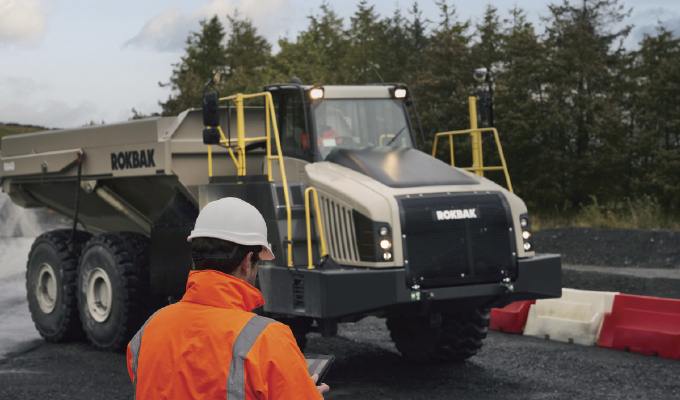Every drop of fuel matters when it comes to running a construction site. That’s why the Haul Track telematics system from Rokbak isn’t just about collecting data, it’s about using it to make your job site more efficient and more cost-effective and produce fewer CO2 emissions.
This article shares seven tips to help you cut fuel costs, reduce environmental impact, and keep operations running smoothly.
- Stay on top of maintenance. Haul Track telematics help you stay informed of key health indicators and address issues such as clogged air filters or inefficient fuel injection to prevent engines from overworking unnecessarily and wasting fuel. Acting on the machine alert and service reminder notifications the system sends to your designated email account ensures your ADTs perform at their best.
- Idling data highlights loading and hauling unit mismatches. Fuel isn’t being used efficiently when your ADTs are sitting in a queue waiting to be loaded. Idling times combined with the GPS location data can help you spot these inefficiencies and address them by making changes to your fleet, which could include changing the size and capacities of both your loading and hauling units.
- On-Board Weigh eliminates wasteful underloading. Underloading trucks means operators make more trips to meet material-movement targets, leading to higher fuel consumption, and greater machine wear. The Rokbak On-Board Weigh system, integrated with Haul Track, provides live payload data so operators can ensure their trucks are carrying the optimal load every time.
- GPS data provides insights to optimize site layout. Long haul roads and bottlenecks eat into fuel efficiency. Telematics gives you the tools to analyze your fleet’s movements, regardless of the brand of equipment you’re using. By coupling GPS data with reports on idle time and fuel consumption, you can optimize haul road lengths, routes, and flow.
- Fuel consumption data and operator-behavior alerts flag opportunities for training. Excessive acceleration, harsh braking, and inconsistent driving habits can cause significant variations in fuel use. Telematics allows you to compare fuel consumption across units performing the same tasks. If one hauler is using noticeably more fuel, it could be a sign that additional operator training could help.
- Maximize efficiency and tire life with system guidance. Underinflated tires increase rolling resistance, which forces the engine to work harder and results in higher fuel consumption, excessive tire wear, and reduced machine stability. Haul Track helps prevent these issues by continuously monitoring tire pressures in real time, allowing operators and fleet managers to quickly identify and correct low-pressure conditions.
- Accurate data enables effective benchmarking and goal setting. Telematics data allows you to set benchmarks for fuel efficiency and measure progress over time. Operators and site managers can work toward realistic targets, with clear feedback on their performance.
Fuel efficiency is all about working smarter. Telematics systems deliver actionable insights that help you make informed decisions and drive continuous improvement for the sake of your bottom line and the environment.
for more information
For more, visit www.rokbak.com.


